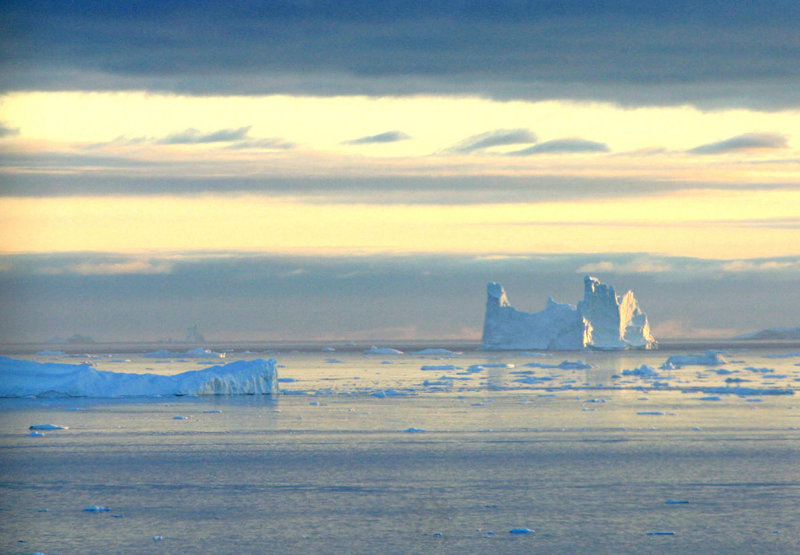WASHINGTON — The extent of Arctic sea ice reached a record low Monday, according to the University of Colorado National Snow and Ice Data Center, and is on track to decline further in the next two weeks.
The news that the Arctic sea ice cover had shrunk to 1.58 million square miles Sunday came two days after Royal Dutch Shell’s drill ship, the Noble Discoverer, took advantage of reduced sea ice and started sailing from Alaska’s Dutch Harbor to the Chukchi Sea, in anticipation of final federal approval for oil exploration activities there.
The area covered by Arctic summer sea ice usually reaches its low point around Sept. 13, when the region begins to cool. But it has been melting at an unprecedented 38,600 square miles per day, and it is likely to decline even further before the ice begins to re-form. The last minimum sea-ice record of 1.61 million square miles was set in September 2007.
Walt Meier, a research scientist at the National Snow and Ice Data Center, said long-term warming coupled with recent weather conditions account for the new low.
Meier noted that the long-term warming trend has produced more open water, which in turn absorbs more heat and makes the ice thinner.
“The thinner ice cover is then more easily melted during the summer, and more easily broken up by winds and waves from storms, which leads to more melting as well,” Meier wrote in an e-mail.
Rafe Pomerance, former deputy assistant secretary of state for environment and development under President Clinton, called the record low “a profound moment that will change the debate” over climate change.
“It is very troubling, because the refrigerator of the Northern Hemisphere has been unplugged, so we will keep warming,” Pomerance said.
But the new record may not convince some global warming skeptics, who continue to question the general scientific consensus that human-generated greenhouse gas emissions are helping drive climate change.
Just last week, a team of British Antarctic Survey researchers published findings in the journal Nature that recent warming in the Antarctic was “unusual” but not unprecedented, since ice core samples showed the continent experienced a warm period several thousand ago, and temperatures had begun to rise again 600 years ago after a relatively cool period.
Further reduction in the extent of summer sea ice, which has declined 40 percent over the past three decades, would have implications far beyond the Arctic.
The difference in temperature between the region and temperate zones is what propels the west-to-east speed of the jet stream, which could shift storm tracks as well as lead to more extreme weather.
Send questions/comments to the editors.



Success. Please wait for the page to reload. If the page does not reload within 5 seconds, please refresh the page.
Enter your email and password to access comments.
Hi, to comment on stories you must . This profile is in addition to your subscription and website login.
Already have a commenting profile? .
Invalid username/password.
Please check your email to confirm and complete your registration.
Only subscribers are eligible to post comments. Please subscribe or login first for digital access. Here’s why.
Use the form below to reset your password. When you've submitted your account email, we will send an email with a reset code.